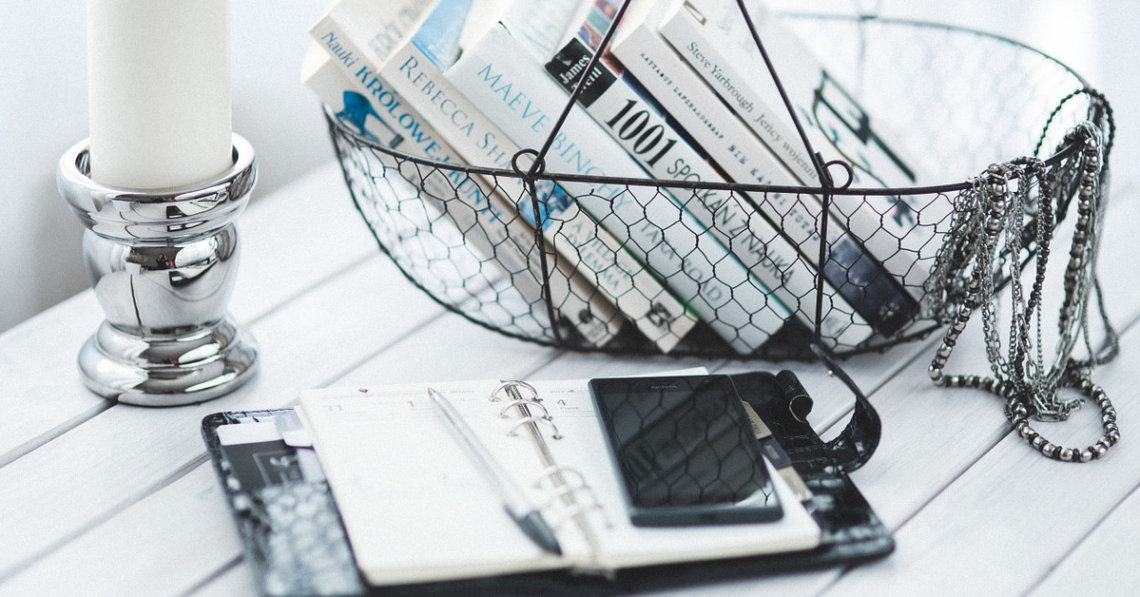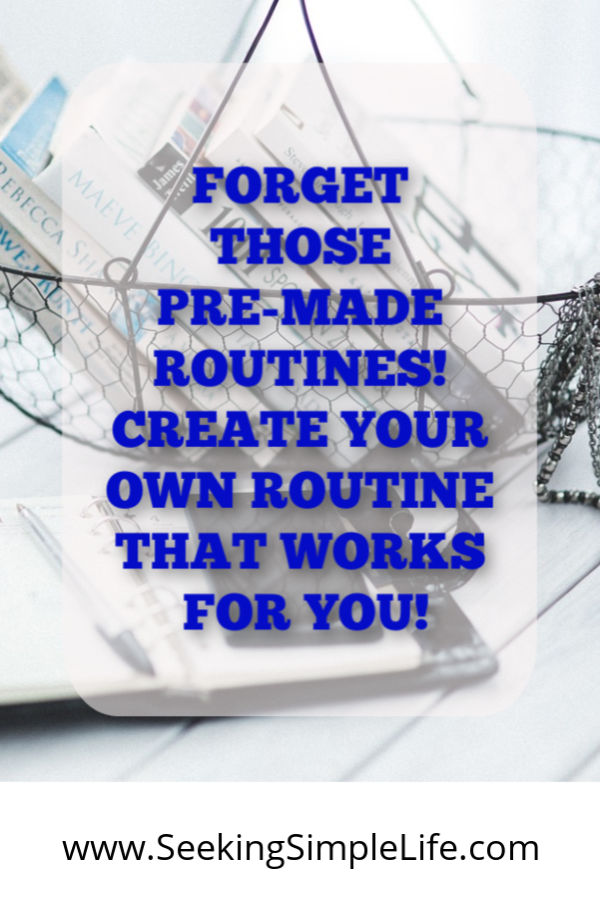
How to Create Custom Routines | Create a Life You Love
Have you spent hours searching Pinterest looking for a routine checklist that you can use to improve your work-life balance? Only to figure out that it won’t work for your schedule. Now what?! All that time wasted, just to discover your life wasn’t exactly the same as everyone else. I have a news flash for you. No one has the same lifestyle, daily schedule, or textbook chaos! Everyone’s life is unique just like yours. All is not lost though, because you can learn how to create custom routines so that you create a life you love.
Whether you are looking to reduce the stress in your life, improve your work-life balance, or even bring some direction and intention into your daily routine creating routines are great for helping all of these issues. Routines are good for you, mostly because your brain loves a routine.
You may not realize it but you have routines right now that you use every day. Your morning routine includes when you wake up, what you use to wake you up, and what you do when you wake up. Not only that, but it will also include every movement you take from getting dressed to brushing your teeth. Do you need to think about every single movement before you do it? No, because it has become a natural routine that your brain just follows.
A routine is a habit or pathway that the brain follows every time. It is a set of actions or tasks that you put together to make it easy to remember. So if you created those custom routines, you can easily follow these next few steps to learn how to create custom routines that will help you create a life you love.
How to Create Custom Routines
The next few steps will teach you how to create custom routines that work for your unique situation. Once you create that routine and start to use it, you may need to adjust the plan so that it flows more naturally for your individual personality. The goal is to be able to do the routine repeatedly over time, consistently, so you don’t have to think through every step.
When you are able to do this, life becomes easier and you will gain more work-life balance. With routines, there is less stress and the ebb and flow of your day are easier to adjust when something happens to create a bit of chaos to the original schedule.
Each custom routine can be added to your daily and weekly schedule to help improve your overall productivity. When planning your schedule, you always want to plan routines first to optimize your time. (For the best scheduling rules ever, click on that link.)
There is a 5 step process that I’ve been using for years to help me set up routines to help make life easier as a working mother of three. Now I’m helping my clients and my family create their own routines to help them make life easier. I even use these steps to help our daughter create a workout routine and a custom kid-friendly morning routine just for her.
Step 1. Figuring out where to start.
Step 2. Pick a set of time block options.
Step 3. Plan the routine details.
Step 4. Try it, test it, readjust if necessary.
Step 5. Make it a habit (routine).
Step 1. Figuring Out Where to Start
When life is overwhelming the best way to overcome that feeling is by looking at how you are feeling and writing down what might be causing these feelings. Be honest with yourself.
What is stressing you out?
Why are you feeling the way you are feeling?
Are you feeling like you’re in a rut?
Do you feel like the little tasks are taking up too much of your time?
Are you avoiding situations and if so why?
You don’t need a fancy journal to do this. A simple piece of paper will work. Next, I want you to pick one common area in your life that seems to be causing these feelings. Then ask yourself this one question:
What can I do to help reduce stress, or improve that situation?
Will this help me move forward with my life goals?
Is it something worth spending time improving?
That last question is a doozy! Because if you are getting worked up over tiny issues that aren’t worth your time fixing, then you need to re-evaluate your life goals, set some priorities and let the little stuff slide off your back!
As for the big stuff, or the stuff that is getting in your way to helping you achieve the life goals…
This is not about what other people need to do to help you. This is about YOU taking control of your own actions and figuring out a plan for YOU.
Before you figure out the whole plan, you first need to figure out the timing for your very busy day and week. That’s step 2.
Step 2. Pick a Set of Time Block Options
Notice I said time block options. Life happens and if you let a change in schedule affect your new routine then you will struggle to make this new custom routine work for you.
2.1 Pick a category for the routine
When picking time block options for this task, first create a category for this new routine. Where does it fit in your life? Is it housework, family time, paperwork filing, budgeting, email checking, important life goal tasks, family needs, work tasks, etc?
2.2. Choose a time of day best used for that category
When are you most productive and alert? Are you a morning person, a mid-day person or do you have your best energy late at night? This is the time block you want to set aside for your most important life goals tasks.
Let’s be realistic, you will need to block some of the days with your must-do tasks for work, family appointments, and commitments you can’t forget. Remember that even your workday can be made easier with routines so you can break the hours in your workday up too. This way you are using your most productive time of the day to get the most important tasks done during that time.
2.3 Set a Time Limit
Set a time limit to create your ideal blocks of time. If you know you have a time limit to get that routine done then it will be easier to stay focused and you can power through that time block.
Once you list the time blocks that might work for your day or week. Then the next step is to plan what you are going to do during that time block.
*Caution* Don’t create a huge time block for one routine, because you will become unproductive. If it is a long task or set of tasks, break it up into smaller chunks of time with a small break between, so that you are more focused on specific goals within each block of time.
Step 3. Plan the Routine Details
When planning the routine details you want to plan what steps you need to take to feel accomplished at the end of the time block. What do you need to do within that new routine? If need be, write down each step so that you can make it easier to remember.
However, if you are setting up a routine where you need to be creative, then setting up a time with a category that gives you the freedom to explore, research, write, or create may be all you need to plan for those routine details. Don’t over plan during your creative time because it may hinder your creativity.
Here’s how our daughter planned her new workout routine as an example. We discussed how she could fit in her physio exercises in her daily routine. She picked a couple of time blocks in her day, one in the morning and one after school.
She already had a set of exercises given to her by her physiotherapist so she figured out what exercises were best in the morning and which ones were better for her stretching and recovery after dance classes. Then she broke out those groups into 2 so she would do one set on day A of her school schedule and the other set on day B of her school schedule.
Aligning the routine to her school schedule will help her stick with it and make it easier for her to remember.
After you plan the routine details, the next step is to try it out.
Step 4. Try It, Test It, Readjust If Necessary
This is may seem like a small and obvious step, but it may just be the most important step throughout this process. Why? It’s simple.
Trying out the routine that you think will work, may not come naturally to you. You may need to readjust the time block or the set of tasks that you wanted to do to improve your situation. Maybe the time block was too long, or not long enough. Maybe where you put it in the schedule doesn’t work or maybe you made it so complicated that you constantly need a reminder to do each step.
At first, it may not seem natural to you to do this routine. However, it can’t be so complicated that you don’t feel like yourself or you are even more stressed trying to do it. If that is happening, stop and readjust the plan! Routines are meant to help you, not hurt you.
Step 5. Make It A Habit (Routine)
Using the time blocks in your schedule to plan your day around routines helps the brain know and prepare what is required of it during that time of day. To re-create a habit or to break yourself out of a stagnant routine that isn’t working for you right now you will need to consistently make your new habit part of your routine 21 times. That’s the magic number experts say we need to reprogram our brain to learn a new routine so it becomes more natural in our lives.
Pulling it all together
Creating your next routine can be small. You don’t need to create a huge routine to make a huge impact on your life. Sometimes it’s the simple small changes that make life so much easier and create huge impacts on your work-life balance. For instance, started meal planning our family dinners so I knew what meat to take out before work and what I needed to make after work before the rush to take the kids to their activities.
Then I downloaded a free shared family scheduling app to see if we could start sharing some of the common family scheduling, grocery planning, and to-do lists. It started with a way for me to plan a grocery list, then I was able to help the family use the app to keep everyone informed on the family schedule and my family was able to help create the grocery list based upon their needs too.
Each small change in our regular routine helped improve life together and bring more work-life balance into my life as a busy working mother. At work, I have routines set so I know what needs to be done first thing in the morning, and throughout each day. I’m able to adjust the schedule slightly as life happens, reassess what’s important and drop tasks off the to-do list as necessary.
When I create a routine, I look at what chaos is creating havoc on my productivity or my work-life balance. There’s always a way to create a routine that will help make small tasks easier to complete. When I can create a set routine for them, then it becomes more natural and part of my daily or weekly routine. I don’t have to think about how to get it done when I naturally do the tasks during the time of day that best works for me.
Now that you know how to create custom routines, what routine will you create first?
Before You Go
WANT TO REMEMBER THIS? SAVE HOW TO CREATE CUSTOM ROUTINES TO YOUR FAVORITE PINTEREST BOARD!







